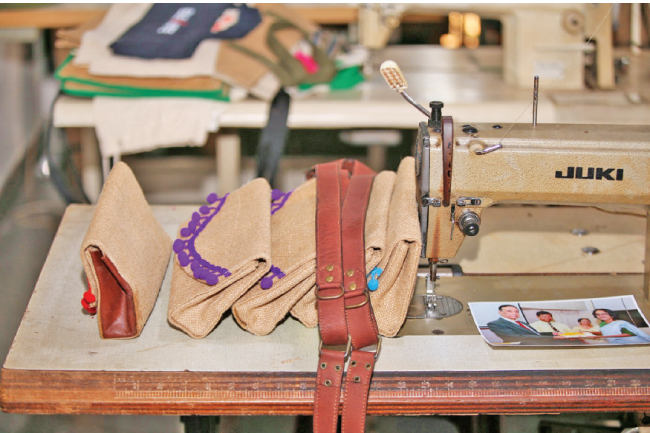Nestled amid the serene embrace of Nawagamuwa Dakuna, a tranquil suburb steeped in natural beauty, lies something that awaits discovery. Tucked away along the winding lanes of Samupakara Mawatha, at the address 343/2A, is a haven of tranquillity and warmth, where the rhythms of rural life intertwine with modern comforts.
The air is alive with the sweet melodies of chirping birds and the gentle rustle of leaves dancing in the breeze. Majestic trees stand sentinel, casting dappled shadows upon the path. You are greeted by an inviting facade adorned with blossoming vines. Time seems to slow here, and worries melt away in the embrace of rural serenity.
As you step across the threshold, you’re welcomed into a world of elegance and rustic charm. Sunlight filters through latticed windows, casting a warm glow upon weathered wooden floors worn smooth with age. Each corner holds a story.
A cherished photograph adorns the mantel, several well-loved books rest upon a weathered cupboard, and the lingering 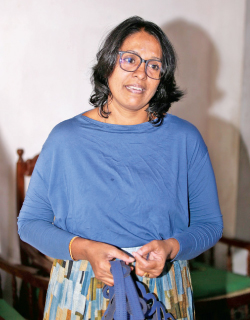 scent of unfinished embroidery infuses the space’s very fabric.
scent of unfinished embroidery infuses the space’s very fabric.
With a vision that began six years ago, Ganga Bandaranayake has transformed her brand, Vishbags, into a symbol of ethical luxury. In a world where sustainability is becoming increasingly vital, Ganga Bandaranayake walks tall towards eco-conscious entrepreneurship.
Eco-friendly principles
“It all started with a simple idea,” Bandaranayake recalls. “I wanted to create something beautiful that wouldn’t harm the planet.” From this seed grew Vishbags, a brand rooted in eco-friendly principles. “Even from the beginning, I insisted on using sustainable materials,” she noted.
Over the years, Bandaranayake’s dedication to sustainability has only deepened. “We’ve gradually expanded our offerings to include leather products,” she explains, “but always with an eco-friendly ethos at the forefront.” This commitment extends to every aspect of Vishbags’ operations, from material sourcing to production techniques.
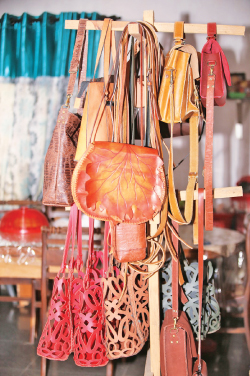 One might wonder how leather, a material traditionally associated with environmental concerns, fits into this eco-friendly paradigm. Bandaranaike is quick to address this misconception. “We source our leather exclusively from slaughterhouses,” she explains. “By repurposing animal skins that would otherwise go to waste, we’re actually reducing environmental impact.”
One might wonder how leather, a material traditionally associated with environmental concerns, fits into this eco-friendly paradigm. Bandaranaike is quick to address this misconception. “We source our leather exclusively from slaughterhouses,” she explains. “By repurposing animal skins that would otherwise go to waste, we’re actually reducing environmental impact.”
She elaborates on the process: “When an animal is slaughtered for meat, its skin is typically discarded. By utilising this byproduct, we’re extending the lifespan of that material.” Bandaranayake highlights the longevity of leather products, noting that they can endure for decades with proper care. “A well-crafted leather bag can last 50 to 70 years,” she remarked content.
Quality and craftsmanship are at the heart of Vishbags’ ethos. “I oversee every step of production personally,” Bandaranayake says. “We do everything by hand, ensuring attention to detail and superior quality.”
Environmental implications
Of course, eco-friendliness comes at a price, both literal and figurative. “Leather products tend to be more expensive,” Bandaranayake acknowledged. “But when you consider the ethical and environmental implications, it’s an investment worth making.”
Despite the challenges, Bandaranayake remains undeterred in her mission. “My goal is to prove that luxury and sustainability coexist,” she declares. “With Vishbags, customers can enjoy beautiful, high-quality products without compromising their values.”
Looking to the future, Bandaranayake is optimistic about the role her brand can play in shaping a more sustainable world. “We’re constantly innovating and exploring new ways to minimise our environmental footprint,” she says. “I believe that by leading by example, we can inspire others to embrace eco-friendly practices.”
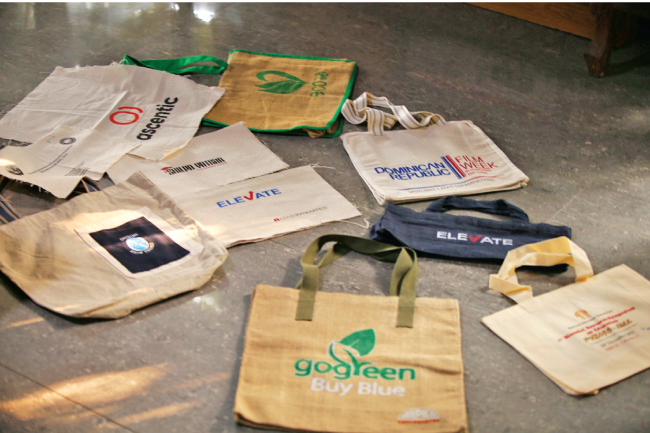
Ganga Bandaranayake’s journey to becoming a pathfinder in sustainable luxury wasn’t paved with traditional schooling or apprenticeships. Instead, she turned to the digital platforms, harnessing the power of online resources like YouTube to hone her craft. “I learned everything from YouTube,” she admits, musing on her unconventional path to mastery.
Bandaranayake later pursued courses at the Industrial Development Board and the National Craft Council. These experiences provided her with essential skills and certifications, laying the foundation for her future endeavours. A six-month traditional leather course at the National Craft Council, in particular, deepened her understanding of the intricate artistry involved in crafting leather goods by hand.
Bandaranayake’s entrepreneurial journey took flight in the digital sphere, with social media platforms serving as the primary gateway to her market. “The market is basically online,” she explains, highlighting the pivotal role of platforms like Facebook in reaching customers far and wide. It was here that her foray into gunny bags began, using her artistic talent to create unique, hand-painted designs.
Unforeseen obstacles
Support from her husband proved instrumental in roaming the challenges of entrepreneurship. Together, they weathered 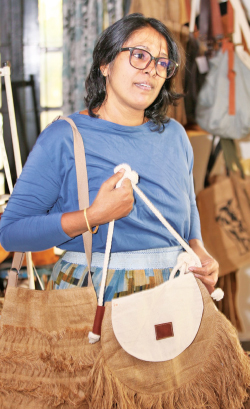 the storms of the business, adapting to unforeseen obstacles such as import issues caused by the Covid-19 pandemic.
the storms of the business, adapting to unforeseen obstacles such as import issues caused by the Covid-19 pandemic.
Bandaranayake remains undiscouraged, nevertheless recognising the distinct allure of leather in the marketplace. “Leather has an exclusive market,” she observes, contrasting its appeal with other materials. While the demand for handcrafted items may come at a premium, Bandaranayake notes a growing preference among consumers for quality over quantity—a sentiment reflected in the loyal network of customers she has cultivated nationwide.
Crafting a leather bag is no small feat, requiring anywhere from four hours to three days of meticulous labour. Yet, for Ganga, each product is a labour of love.
Male-dominated
Despite the prevalent notion that certain trades are reserved for men, Bandaranayake fearlessly pursued her passion, defying societal expectations every step of the way.
“I noticed that only boys are motivated to get training in these crafts,” Bandaranayake shares her experience with gender dynamics within the industry. The lack of female representation was never to hold her back. She was determined to carve out her own path in a male-dominated field.
Yet, she has had her fair share of challenges. Bandaranayake encountered obstacles in accessing training opportunities and sourcing the necessary tools for her craft. “Tools are also not available in the market,” she reveals, highlighting yet another barrier faced by aspiring artisans like herself.
Bandaranayake turned to online platforms like AliExpress to procure the tools she needed to bring her creative vision to life. This was her opportunity to transform adversity into opportunity.
Pictures by Thilak Perera
Sachitra Mahendra





